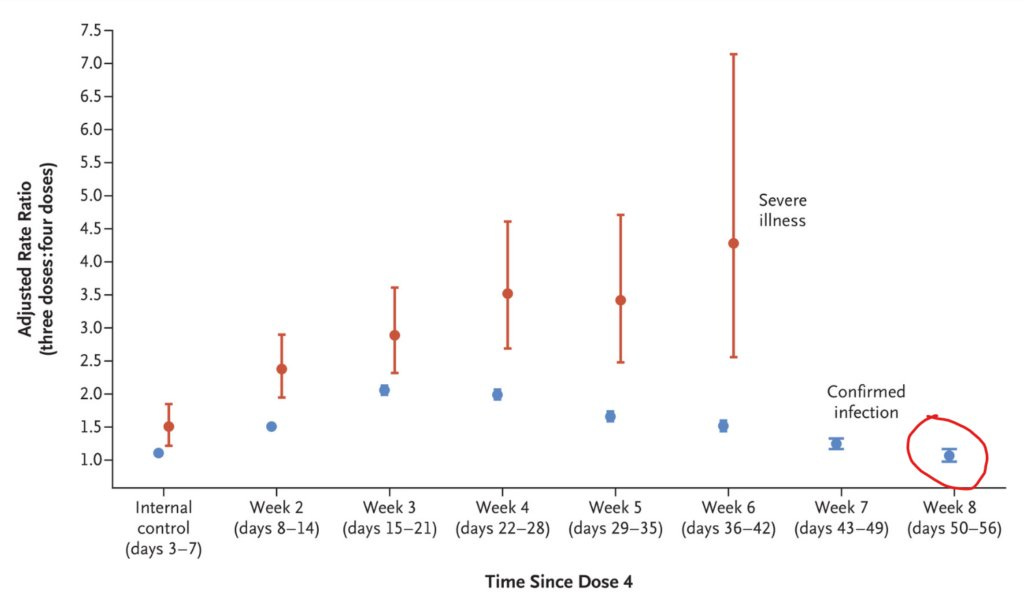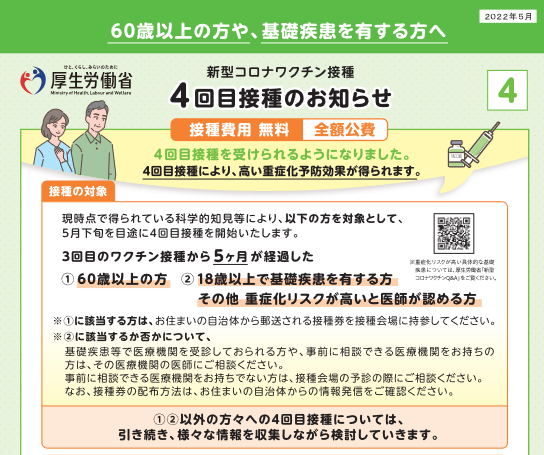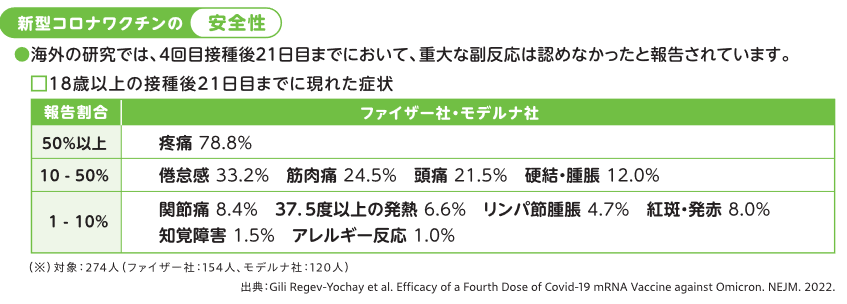May the 4th (shot) be in you
To help clear its enormous inventory of mRNA injections (now with newly re-extended 12-month expiry dates!), Japan has this month started offering 4th doses to suckers people who are over 60 or have pre-existing conditions and are over 18.
Similarly to the information for 5-11 year olds, I’d like to take a look at what information the Ministry of Health, Labour, and Welfare (MHLW) is providing to people contemplating spreading even more lipid nanoparticles throughout themselves, suppressing their immune systems, and further enforcing Original Antigenic Sin.
First, let’s look at what the MHLW says about vaccine effectiveness.
The text tells the reader that the 4th dose has been reported to maintain its protection against severe disease for 6 weeks. Yes, 6 whole weeks. And below is the key figure from the cited study by Bar-On et al.

The 95% confidence intervals show that protection from the 4th dose by Week 6 is within the range of 2.5 to 7.0 times that of the 3rd dose. The graph also shows a slight decline from Week 4 to Week 5, so the data for Week 6 isn’t very meaningful, to put it nicely.
And the MHLW forgot to mention that the protection against infection is gone by Week 8 (red circle). And this data is comparing quadruple-jabbers with people triple-jabbed four months before, not the unjabbed. So let’s look at Ontario, Canada’s data to see how protected triple-jabbers are against infection after four or more months compared with the unjabbed.
Not very. And before anyone thinks about saying, “But it protects against severe Covid,” there’s not much evidence the Japanese actually need protection from severe Covid.
So what does the MHLW have to say about safety?
The MHLW mentions that no major adverse events were reported within 21 days of the fourth jab in an overseas study. It then lists adverse events reported, like 78.8% injection site pain, 33.2% fatigue, 24.5% muscle pain, 21.5% headaches, etc. Not particularly tempting.
However, this data comes from a 274-person study done in Israel, which is hardly large enough to pick up all those “rare” side effects like death. And like before, the MHLW forgot to mention the severity of the adverse effects.
So let’s look at the severity data (stuck away in the supplementary material, naturally). Adverse event severity was self-reported by the participants (Israeli medical personnel) on a scale of 1 to 10. First, local events (i.e., at the injection site). In case you didn’t know, BNT is Pfizer/BioNTech and mRNA is Moderna.
Those are some sore arms. And one participant reported local symptoms for 30 days! And what about the systemic events (i.e., the rest of the body)?
Not great. In terms of max duration, one person suffered fatigue for 24 days, another headache for 24 days, another arthralgia (joint pain) for 24 days, another myalgia (muscle pain) for 14 days, and another paresthesia (abnormal skin sensations) for 14 days. Impressive for such a small sample and considering the reduced risk of infection only lasts 50 days. Oh, and about 20% of the quadruple-jabbers tested positive for Covid, which some may think is relevant here.
In summary, the MHLW cherry-picked unconvincing data from two studies that actually show the mRNA injections to be defective. I think the government should probably leave vax promotion to TV. At least that way, we can get some entertainment.
Update 27 June
There’s also plenty of evidence that adverse event data from places like Israel aren’t applicable to the Japanese. For details, see here.










